I am trying to simulate solar cells of a solar module with 72 cells and see the effects of partial shading and the activation of bypass diode. For now I am just simulating 2 cells of the PV module as shown below:
I am confident that the model works without the bypass diodes because this is what I get when I plot I(V2) vs V(v+), at 1000w/m2. {Virr} is what I use to change the irradiance level.
However, when I change the irradiation on the bottom cell to 500 W/m2, where I would like to see the effect of the bypass diode, I can see that the bypass diode activates, however, it activates at the wrong voltage as shown below:
Please note that the voltage axis is from -1V to +1V. The waveform is correct because we see at 1000 W/m2, current is about 9.4A, and then its dips to about 4.8A for 500 W/m2. However, the current dips at about 0V and I do not understand why that happens, where as it should be happening around 0.5V.
Please help me out, I have trying a lot stuff such as changing to different bypass diodes but the graph does not change much.
I have attached the Solar Cell.asc file for quick access.
Also the text for Solar Cell.asc is pasted below:
Version 4
SHEET 1 1848 1508
WIRE 176 720 -32 720
WIRE 400 720 176 720
WIRE 528 720 400 720
WIRE 752 720 608 720
WIRE 928 720 752 720
WIRE 1568 720 1504 720
WIRE 1696 720 1568 720
WIRE -32 784 -32 720
WIRE 400 784 400 720
WIRE 176 800 176 720
WIRE 1264 800 1264 736
WIRE 752 816 752 720
WIRE 1504 816 1504 720
WIRE 1696 816 1696 720
WIRE 1264 928 1264 880
WIRE 1504 960 1504 896
WIRE 1600 960 1504 960
WIRE 1696 960 1696 896
WIRE 1696 960 1600 960
WIRE -32 1008 -32 864
WIRE 176 1008 176 864
WIRE 176 1008 -32 1008
WIRE 400 1008 400 864
WIRE 400 1008 176 1008
WIRE 752 1008 752 880
WIRE 752 1008 400 1008
WIRE 928 1008 752 1008
WIRE 1600 1008 1600 960
WIRE 176 1152 -32 1152
WIRE 400 1152 176 1152
WIRE 528 1152 400 1152
WIRE 752 1152 608 1152
WIRE 928 1152 928 1008
WIRE 928 1152 752 1152
WIRE -32 1216 -32 1152
WIRE 400 1216 400 1152
WIRE 176 1232 176 1152
WIRE 752 1264 752 1152
WIRE -32 1440 -32 1296
WIRE 176 1440 176 1296
WIRE 176 1440 -32 1440
WIRE 400 1440 400 1296
WIRE 400 1440 176 1440
WIRE 752 1440 752 1328
WIRE 752 1440 400 1440
WIRE 928 1440 752 1440
WIRE 400 1488 400 1440
FLAG 1264 928 0
FLAG 928 720 v+
FLAG 1264 736 v+
FLAG 1600 1008 0
FLAG 1568 720 illu
FLAG 928 1440 v-
FLAG 400 1488 0
SYMBOL bi -32 864 R180
WINDOW 0 24 80 Left 2
WINDOW 3 24 0 Left 2
SYMATTR InstName B1
SYMATTR Value I=Isc*(v(illu)/1000)+Isc_t
SYMBOL res 624 704 R90
WINDOW 0 0 56 VBottom 2
WINDOW 3 32 56 VTop 2
SYMATTR InstName R1
SYMATTR Value {Rs}
SYMBOL res 416 880 R180
WINDOW 0 36 76 Left 2
WINDOW 3 36 40 Left 2
SYMATTR InstName R2
SYMATTR Value {Rsh}
SYMBOL diode 160 800 R0
SYMATTR InstName D1
SYMATTR Value Dcell
SYMBOL voltage 1264 784 R0
WINDOW 123 0 0 Left 0
WINDOW 39 0 0 Left 0
SYMATTR InstName V1
SYMATTR Value 0
SYMBOL voltage 1504 800 R0
WINDOW 123 0 0 Left 0
WINDOW 39 0 0 Left 0
SYMATTR InstName V2
SYMATTR Value {Virr}
SYMBOL res 1680 800 R0
SYMATTR InstName R3
SYMATTR Value 100Meg
SYMBOL bi -32 1296 R180
WINDOW 0 24 80 Left 2
WINDOW 3 24 0 Left 2
SYMATTR InstName B2
SYMATTR Value I=Isc*(500/1000)+Isc_t
SYMBOL res 624 1136 R90
WINDOW 0 0 56 VBottom 2
WINDOW 3 32 56 VTop 2
SYMATTR InstName R4
SYMATTR Value {Rs}
SYMBOL res 416 1312 R180
WINDOW 0 36 76 Left 2
WINDOW 3 36 40 Left 2
SYMATTR InstName R5
SYMATTR Value {Rsh}
SYMBOL diode 160 1232 R0
SYMATTR InstName D2
SYMATTR Value Dcell
SYMBOL diode 768 880 R180
WINDOW 0 24 64 Left 2
WINDOW 3 24 0 Left 2
SYMATTR InstName D3
SYMATTR Value Dbypass
SYMBOL diode 768 1328 R180
WINDOW 0 24 64 Left 2
WINDOW 3 24 0 Left 2
SYMATTR InstName D4
SYMATTR Value Dbypass
TEXT -8 32 Left 2 !.param Virr=1000 Voc=47.2 Isc=9.39 T=273+temp Is=4.59e-7 Rs=0.3264/Ns Rsh=434.085 a=2.425 K=1.3806e-23 q=1.602e-19 Ns=72 n={(a*q)/(Ns*K*T)}\n \n.param Isc_coeff={Isc*(0.06/100)}\n \n.param Voc_coeff={(Voc/Ns)*(-0.3/100)}\n \n.param Uo={(Voc/Ns)*(1+Voc_coeff*(T-(25+273)))}\n \n.param Isc_t={Isc_coeff*(T-(25+273))}\n \n.param Io={(Isc-(Uo/Rsh))/(exp(q*Uo/(n*K*T))-1)}\n \n.param temp=60\n \n.model Dcell D Is=Is n=n\n \n.model Dbypass D IS=10.134E-6 N=1.137 RS=12.648E-3
TEXT 8 -32 Left 2 !.dc V1 -1 1.05 0.01


